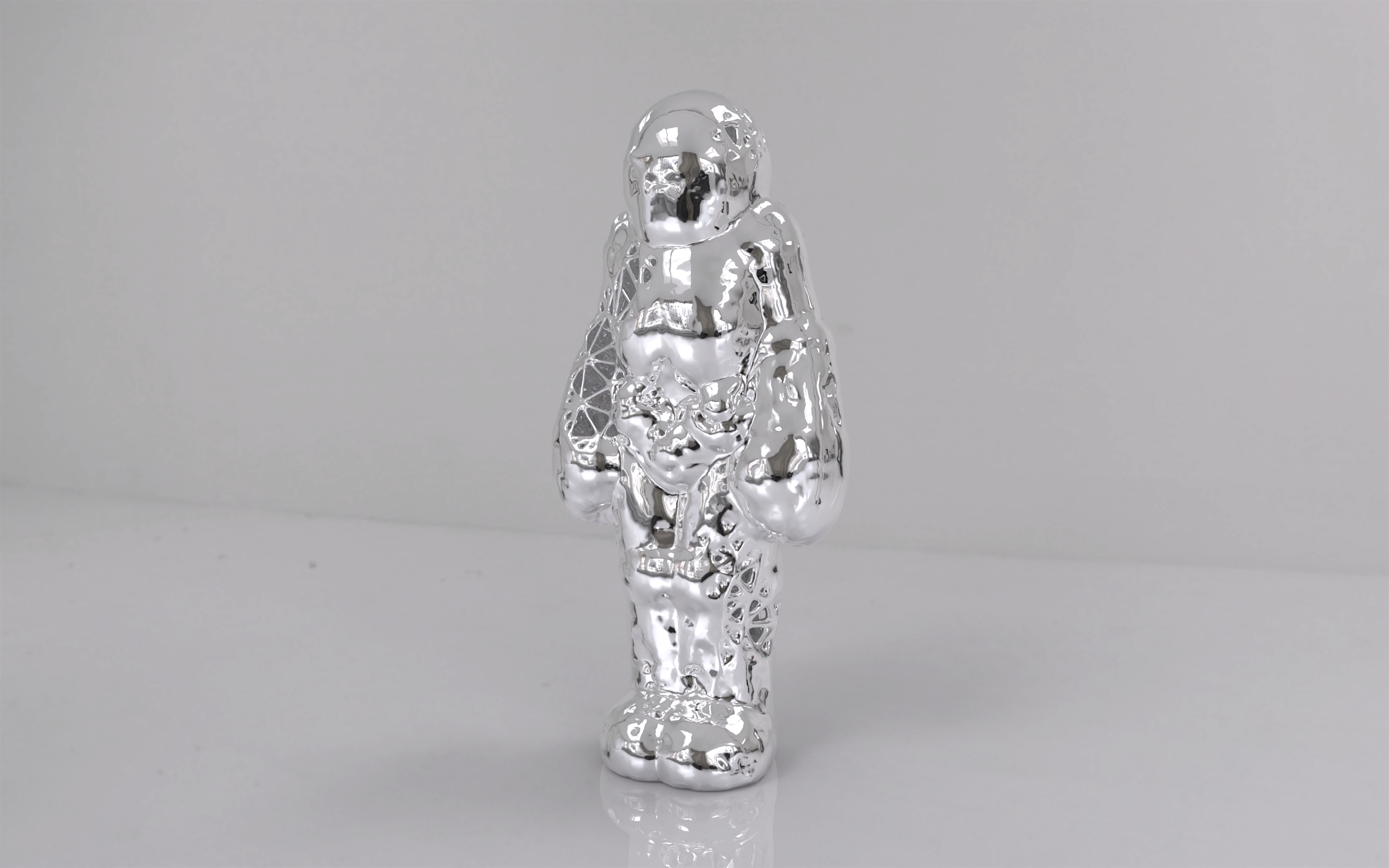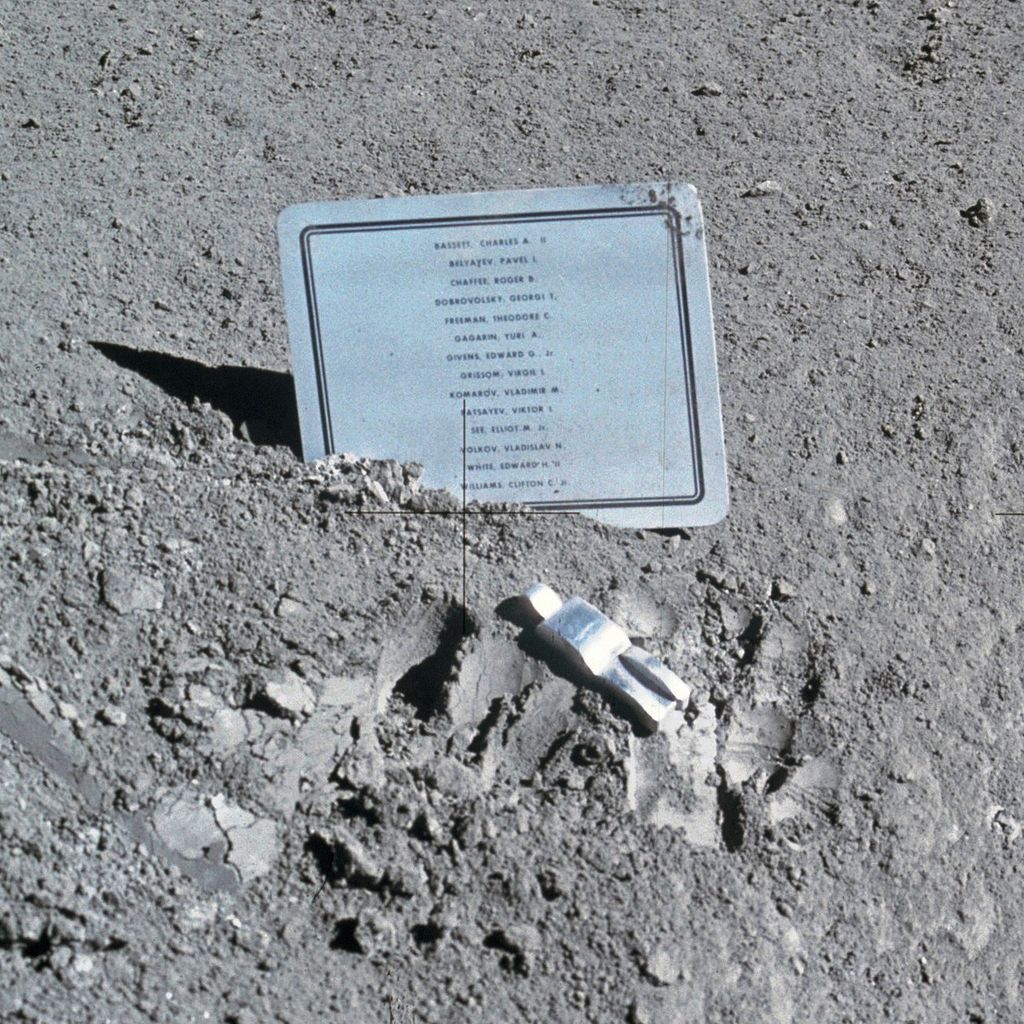S.A.D.Astronaut
Is a sculpture and R&d project inspired by the ‘Fallen Astronaut’, an 8.5 centimeter (3.3 in) aluminium sculpture created by Paul Van Hoeydonck. It is a small stylized figure, meant to depict an astronaut in a spacesuit, intended to commemorate the astronauts and cosmonauts who have died in the advancement of space exploration. It was commissioned and placed on the Moon by the crew of Apollo 15 on August 1, 1971, next to a plaque listing the fourteen men known at the time to have so died. The crew kept the memorial’s existence a secret until after completion of their mission.
De Wilde’s S.A.D.Astronaut is selected for the ‘Giant Steps’ exhibition in Seattle (USA) organised by Vital 5 Productions, which aims to bring one artwork, artist and astronaut to the Moon. The Pacific Northwest holds a high concentration of space enterprises, including Boeing, Vulcan Aerospace, Aerojet Rocketdyne, Space X, and Blue Origin. Humankind lives closer to outer space than ever before. How does this affect the future of art and culture? What would artists do given the opportunity to create art in space?
De Wilde collaborates with space scientist Guerric de Crombrugghe de Looringhe to develop the artwork.
S.A.D.Astronaut
Is a schematic human figure in a meditative pose, contemplating the Earth. It is made out of expanding foam or shape-memory polymer (SMP). It is thus the vacuum, the very nothingness of the Moon, which gives him shape. Polymer provide the additional advantage that they can be coupled with photopolymerization properties, i.e. exposure to UV radiation will cause the polymer to harden, effectively transforming the man on the Moon into stone [1]. While humans need an ecosystem, atmosphere, pressure, protection from radiation to survive, the man on the Moon can only exist through the absence of these elements. The statue is equipped with a suite of sensors that could include but are not limited to: thermocouples, magnetometers, and UV sensors. In addition, there is a small antenna (0.2kg), solar panels (0.2kg), and a computer unit (0.5kg) [2]. These are designed to be sufficient to establish a dialogue between the artwork and the Earth in the form of very short messages. The mass and volume budget are not exceeded, and installation should not be a problem either.
Ground Control to Major Tom
At the ground control centres, users can ask a series of pre-determined questions to the astronaut, some of which are personal, such as “Do you feel lonely?”, some other being more trivial, such as “How’s the weather?”. The question is sent to the man on the Moon, and interrogates its sensors. After some post-processing, the answer arrives back a handful of seconds later: “I might be alone on the Moon, but I currently have a view of over all of Asia: over 2 billion people!” or “It’s a warm 200°C at the moment. Luckily I’m not a human, otherwise I would be long dead.” After the installation of the artwork on the Moon, the astronauts will collect a sample of the lunar soil at the man on the Moon’s feet and return it to Earth. Thereby, in addition to establishing a dialogue, users will see a rock as material proof of the reality of their experience.
Dialogue & Evolution
It is only through the establishment of this dialogue between the man on the Moon and the users that the former comes to existence. Without dialogue, it would simply be an oddly-shaped rock. With a dialogue, he becomes humanity’s ambassador on the Moon. A humanoid being, sent on a foreign body to report on his sensorial impressions. Nevertheless, as time goes by, loneliness begins to act on the man on the Moon. As his electronic components degrade through exposition to intense radiation and his solar panels get dusty, his answers become scarce and make less sense. Because he has no heart, it is his entire body that hardens in this world of solitude. Eventually, he becomes silent, lost in the deepest meditation. He remains in full contemplation of the planet that sent him there, and its inhabitants lost in their petty daily business while he stands tall for decades, centuries, possibly eons. He stands forever, statue of stone, allegory of the dialogue that once existed between the ever-changing Earth and the immutable Moon.




